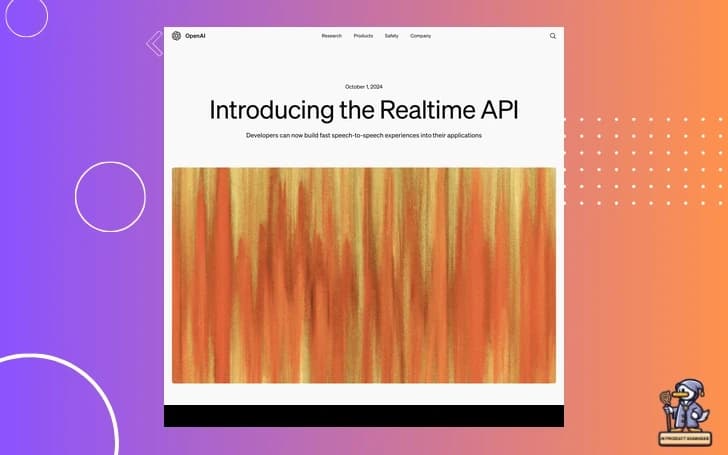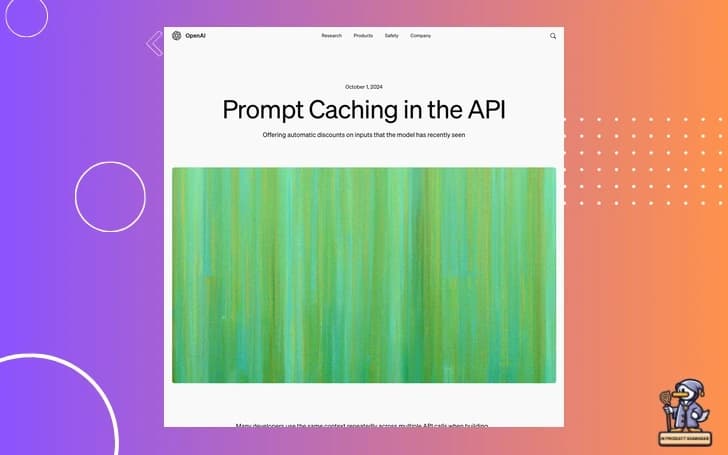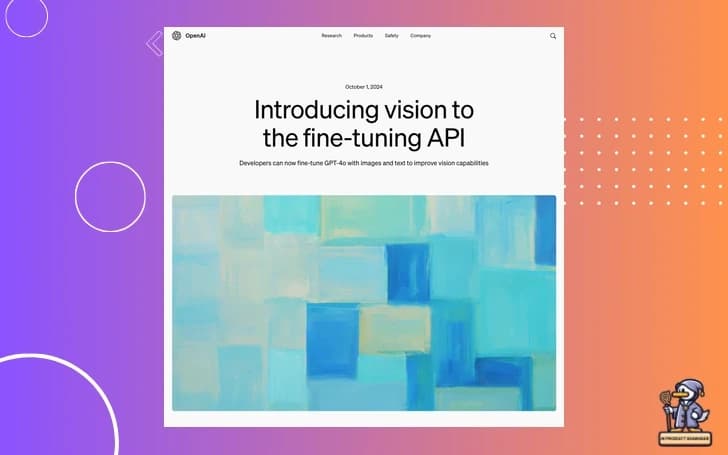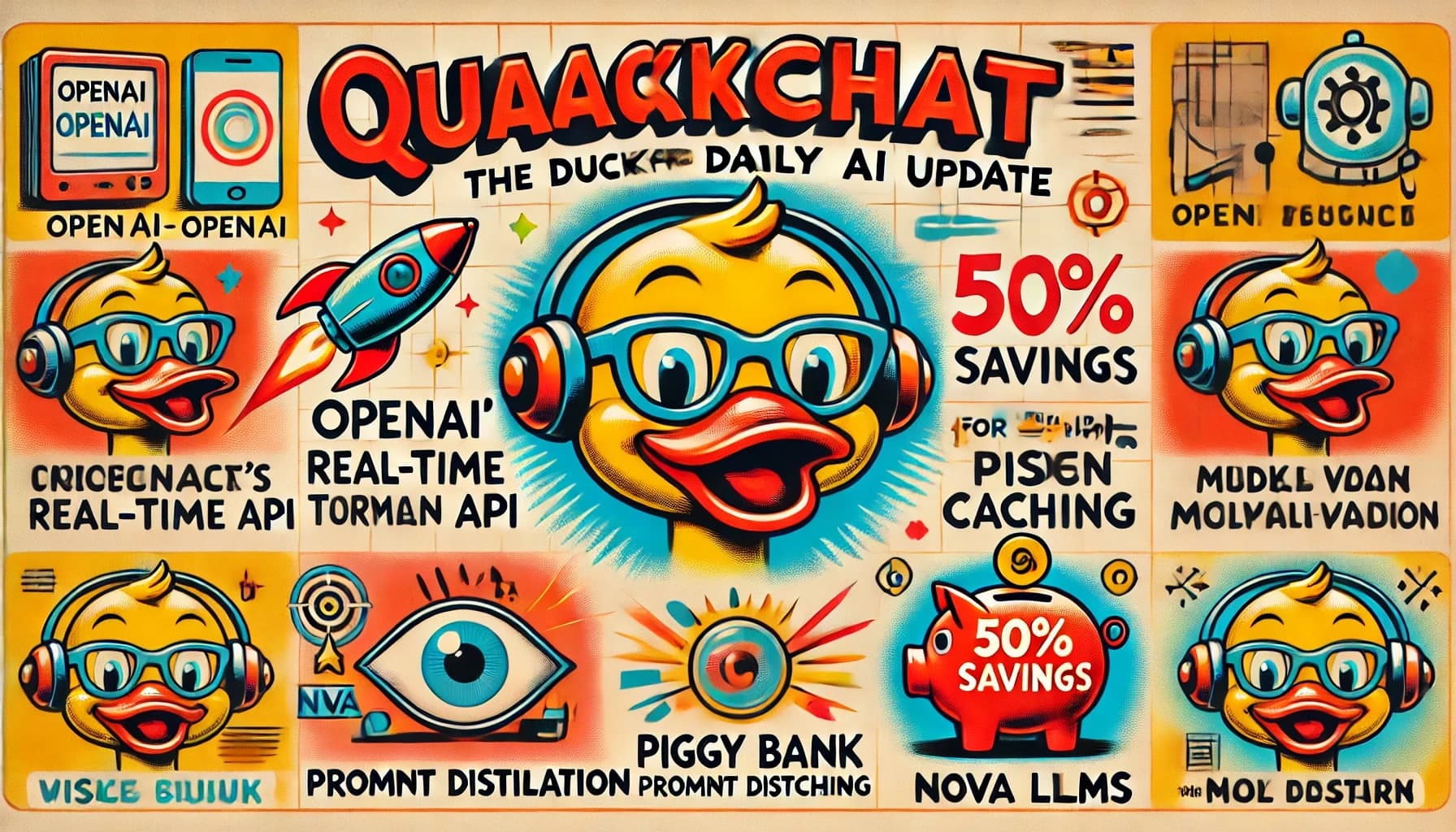🦆 Welcome to QuackChat: The DuckTypers' Daily AI Update!
Guten Tag, my fellow Ducktypers! It's Jens here, and boy, do we have an exciting episode for you today. Remember how Rod talked about Liquid AI shaking up the model scene last time? Well, hold onto your keyboards because OpenAI just dropped some massive announcements at their DevDay event. Let's dive into these groundbreaking developments and see how they might revolutionize our AI engineering landscape!
🚀 OpenAI's Real-time API: A Game-Changer for Voice Interactions

First up, OpenAI has unveiled their new real-time API, and it's set to transform how we handle voice-enabled applications. Now, I know what you're thinking – "Jens, we've seen voice APIs before." But trust me, this one's different.
Here's the kicker:
- Audio input costs $0.06 per minute
- Audio output is priced at $0.24 per minute
Now, let's break this down with a bit of pseudocode to see how we might implement this:
from openai import RealtimeAPI
def voice_interaction():
api = RealtimeAPI()
with api.listen() as audio_input:
user_speech = audio_input.transcribe()
response = api.generate_response(user_speech)
with api.speak() as audio_output:
audio_output.synthesize(response)
# Usage
while True:
voice_interaction()This real-time capability opens up a world of possibilities for creating more natural, flowing conversations with AI. Imagine building a virtual assistant that can truly keep up with human speech patterns!
Call to Comment: Ducktypers, how do you see this real-time API changing the game for voice-enabled applications? What kind of projects would you tackle with this new capability?
💰 Prompt Caching: Slashing Costs and Boosting Speed

Next up, let's talk about something that's music to every developer's ears – cost savings. OpenAI has introduced prompt caching, offering a whopping 50% discount on previously seen tokens. This is huge, Ducktypers!
Here's how it works:
- The API caches prompts longer than 1,024 tokens
- Caching occurs in 128-token increments
- Cached prompts clear after 5-10 minutes of inactivity
Let's look at how this might affect our code:
from openai import OpenAI
client = OpenAI()
def generate_response(prompt):
# This function now benefits from prompt caching
response = client.completions.create(
model="gpt-4",
prompt=prompt,
max_tokens=100
)
return response.choices[0].text
# Usage
frequent_prompt = "Summarize the latest AI news in 5 bullet points:"
for _ in range(10):
summary = generate_response(frequent_prompt)
print(summary)
# Each call after the first will be faster and cheaper!This caching mechanism could be a game-changer for applications that frequently use similar prompts. Think chatbots, content generation tools, or any AI-powered app with recurring queries.
Call to Comment: How would prompt caching affect your current projects? Can you think of any innovative ways to leverage this feature to optimize your AI applications?
👁️ Vision Fine-tuning: Seeing is Believing

Now, let's shift our focus to something truly eye-opening – pun intended! OpenAI has added a vision component to their Fine-Tuning API. This is a big deal for anyone working on multimodal AI applications.
Here's what you need to know:
- Supports fine-tuning of vision models up to 90B parameters
- Enables custom visual recognition tasks
- Allows integration of visual and textual data in training
Let's imagine how we might use this in a practical scenario:
from openai import OpenAI
client = OpenAI()
def train_custom_vision_model(dataset):
fine_tuned_model = client.fine_tunes.create(
model="gpt-4-vision-preview",
training_data=dataset,
# Additional parameters for vision fine-tuning
)
return fine_tuned_model.id
def use_fine_tuned_model(model_id, image):
response = client.chat.completions.create(
model=model_id,
messages=[
{"role": "system", "content": "You are a custom-trained vision model."},
{"role": "user", "content": [
{"type": "text", "text": "What can you tell me about this image?"},
{"type": "image_url", "image_url": {"url": image}}
]}
]
)
return response.choices[0].message.content
# Usage
custom_model_id = train_custom_vision_model(my_dataset)
analysis = use_fine_tuned_model(custom_model_id, "path/to/image.jpg")
print(analysis)This opens up a whole new world of possibilities for creating specialized AI models that can understand and interpret visual data alongside text.
Call to Comment: What kind of custom vision models would you like to create with this new capability? How might this change the landscape of image recognition and visual AI applications?
🧠 Model Distillation: Squeezing Out Every Drop of Efficiency

Last but certainly not least, OpenAI introduced Model Distillation. This technique allows for the creation of smaller, more efficient models that retain much of the knowledge of larger ones.
Key points:
- Enables creation of task-specific, lightweight models
- Potentially reduces inference time and resource usage
- Opens up possibilities for edge computing and mobile AI
Here's a simplified conceptual example of how model distillation might work:
from openai import OpenAI
client = OpenAI()
def distill_model(teacher_model, student_model, dataset):
# This is a conceptual representation
distilled_model = client.models.distill(
teacher_model=teacher_model,
student_model=student_model,
training_data=dataset
)
return distilled_model.id
def use_distilled_model(model_id, prompt):
response = client.completions.create(
model=model_id,
prompt=prompt,
max_tokens=50
)
return response.choices[0].text
# Usage
teacher = "gpt-4"
student = "gpt-3.5-turbo"
distilled_model_id = distill_model(teacher, student, my_dataset)
result = use_distilled_model(distilled_model_id, "Explain quantum computing")
print(result)This could be revolutionary for deploying AI in resource-constrained environments or for creating ultra-fast, specialized AI assistants.
Call to Comment: How do you see model distillation changing the way we deploy AI models? What kind of applications could benefit most from this technology?
🌟 Bonus: Nova LLMs Setting New Benchmarks

Before we wrap up, I can't help but mention the exciting news about the Nova suite of Large Language Models. These models, particularly Nova-Pro, are setting new benchmarks with an impressive 88.8% score on the MMLU (Massive Multitask Language Understanding) test.
Here's a quick rundown:
- Nova-Instant: Fast and cost-effective
- Nova-Air: Balanced performance
- Nova-Pro: Top-tier capabilities
While we don't have access to the internals, we can speculate on how these models might be used:
from nova_ai import NovaAI
client = NovaAI()
def use_nova_model(model_type, prompt):
response = client.generate(
model=f"nova-{model_type}",
prompt=prompt,
max_tokens=100
)
return response.text
# Usage
instant_response = use_nova_model("instant", "Quick summary of today's news")
pro_response = use_nova_model("pro", "Detailed analysis of quantum entanglement")
print(f"Instant: {instant_response}")
print(f"Pro: {pro_response}")This development shows that the AI model landscape is becoming increasingly competitive, with new players pushing the boundaries of what's possible.
Call to Comment: What are your thoughts on these new Nova models? How do you think they'll stack up against established players like GPT-4 in real-world applications?
🎓 Wrapping Up: The AI Landscape is Evolving Rapidly
Wow, Ducktypers, what a packed episode we've had today! We've covered:
- OpenAI's game-changing real-time API
- Cost-saving prompt caching
- Vision capabilities in the fine-tuning API
- The potential of model distillation
- Nova's impressive new LLMs
These developments are reshaping the AI landscape at a breathtaking pace. As engineers, it's crucial that we stay on top of these changes and think critically about how we can leverage them in our projects.
Final Call to Comment: Which of these advancements excites you the most, and why? How do you see these technologies shaping the future of AI development?
Until next time, this is Jens signing off. Auf Wiedersehen, and happy coding!
P.S. If you found this episode informative, don't forget to like, subscribe, and share with your fellow AI enthusiasts. Let's grow our Ducktyper community and shape the future of AI together!


